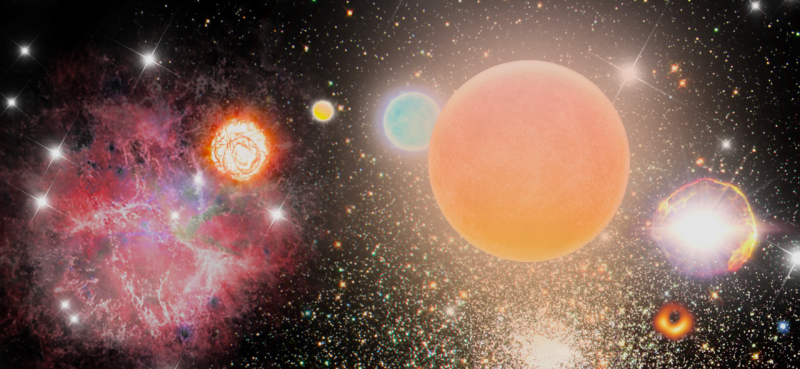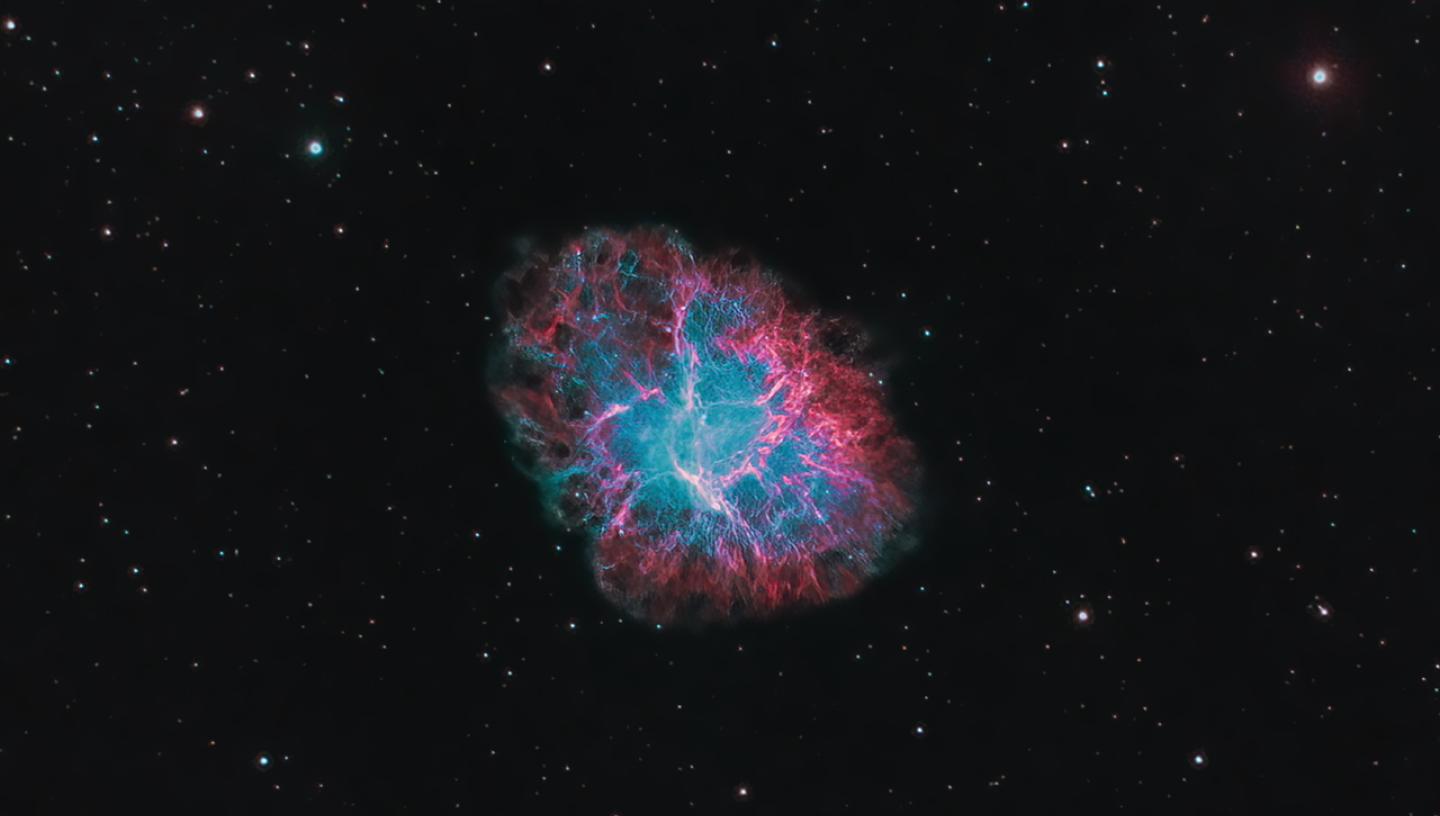
Discover what to see in the night sky in December 2022, including a pair of lunar occultations and two meteor showers.
Top 3 things to see in the night sky in December
- 5 & 8 December – Watch the Moon pass in front of Uranus (on 5 Dec) and Mars (on 8 Dec)
- 13/14 December – Catch the peak of the Geminids meteor shower
- Throughout the month – Spot the Crab Nebula in the constellation of Taurus
(Details given are for London and may vary for other parts of the UK)
Read January 2023's night sky highlights
Look Up! Podcast
Subscribe and listen to the Royal Observatory Greenwich's podcast Look Up! As well as taking you through what to see in the night sky each month, Royal Observatory Greenwich astronomers pick a topic to talk about.
December's episode is all about the Moon as we celebrate the success of Artemis 1 and the 50th anniversary of Apollo 17 - the last mission to put people on the Moon. You can listen below and you can vote whether you'd like to go to the Moon or not on our Twitter poll (@ROGAstronomers).
Our podcast is available on iTunes and SoundCloud.
5 & 8 December: Lunar occultations of Uranus and Mars
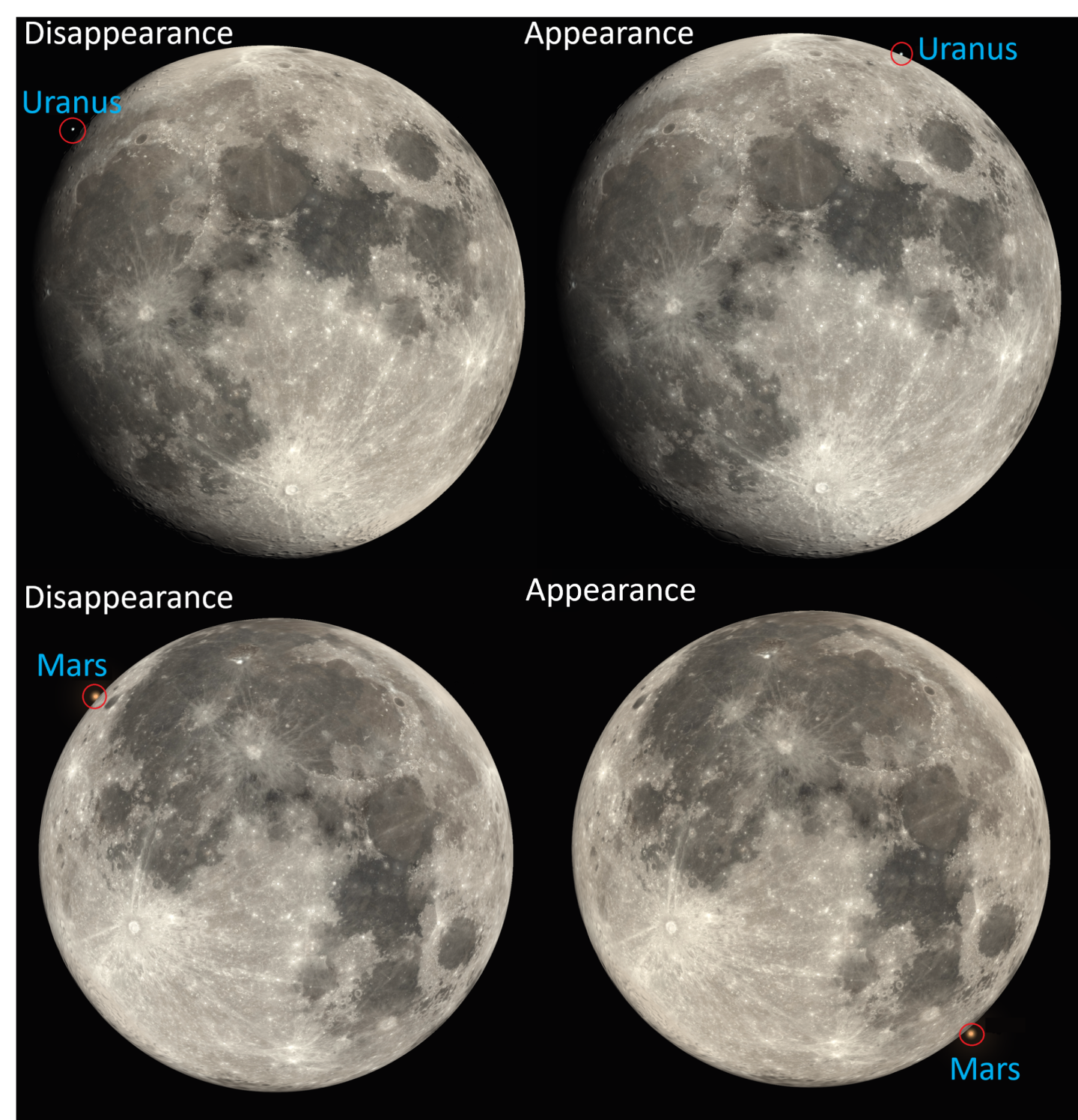
We are treated to not one, but two lunar occultations this month. The first will happen on 5 December when the Moon appears to pass in front of Uranus and the second is on 8 December when the Moon occults Mars.
If you watch the Moon over an hour or so, you’ll see that it moves relative to the background stars and might even move in front of a bright star or two. That’s because the Moon orbits around the Earth. From our point of view on 5 December, you’ll see the Moon approach Uranus before it moves in front of the planet. The exact time will depend on your location, but for London it will be at around 16:46 GMT and it will vary by a few minutes around the UK. If the Moon is a clock face, Uranus will disappear at around the 10 o’clock position. It will peek out from behind the Moon again at 17:23 GMT at the 1 o’clock position. It might be a challenge to see dim Uranus, especially as the Moon will be almost full.
The Moon will be at its full Moon phase on 8 December during its occultation with Mars. Mars will disappear at 04:55 GMT at the 10 o’clock position and reappear at 05:56 GMT at the 4 o’clock position. Mars will also be at opposition on 8 December, meaning that it will appear at its brightest and largest.
These occultations are best seen through a large pair of binoculars or a telescope so that you can see the planets as disks instead of points of light. This is particularly true for Uranus as it is usually too dim for our eyes to see.
13/14 December: The peak of the Geminids

December also brings us two meteor showers – the Geminids and the Ursids.
The Geminids tend to be one of the best meteor showers of the year thanks to bright, abundant, and multi-coloured meteors.
The peak of the Geminids is on 13 – 14 December, but you can see meteors from this shower from 4 to 20 December. Sadly, the waning gibbous Moon will rise at around 21:30 GMT on 13 December and its light will drown out the dimmer meteors, so don’t expect to see as many as the maximum hourly rate of 150 meteors that are usually associated with the Geminids!
22/23 December: The Ursids peak tonight
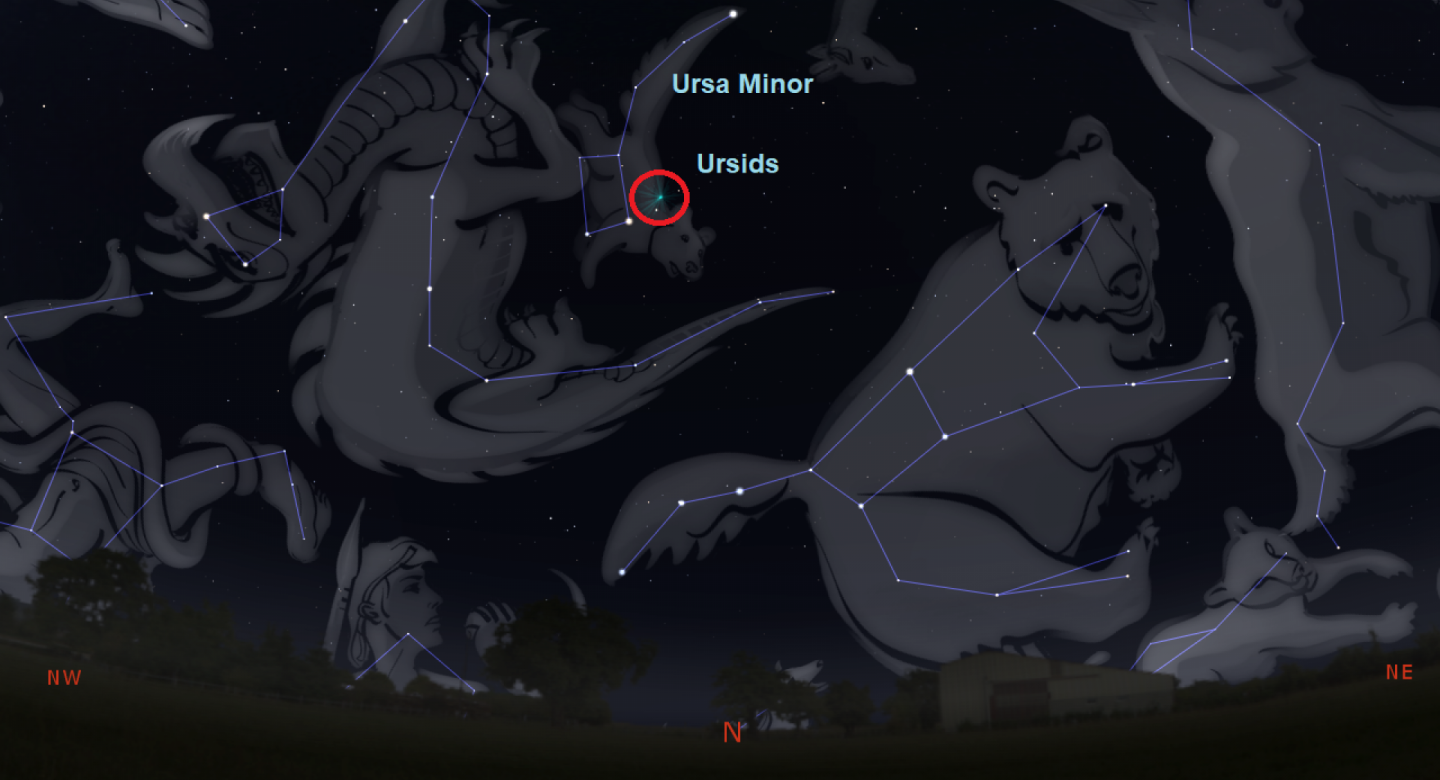
The Ursids is active between 17-26 December and its peak falls on 22-23 December. Whereas the source material of the Geminids comes from the rocky object 3200 Phaethon, the Ursids come from the debris left behind by the icy comet 8P/Tuttle.
The Moon will not be up in the night sky to interfere with the peak of the Ursids, however, under ideal conditions, observers can expect to see no more than 10 meteors per hour. Meteor showers are named after the nearest constellation that they appear to radiate from. For the Geminids, it is Gemini and for the Ursids it is Ursa Minor. You can read more about meteor showers in our handy guide.
21 December: The Winter Solstice
Winter is on the way with the approach of the winter solstice! This year the winter solstice falls on 21 December at 21:48 GMT and marks the start of astronomical winter. The Sun will reach its most southerly point at this time, meaning that it will shine directly above the Tropic of Capricorn. The Northern Hemisphere will have its shortest day of the year and will gradually gain daylight after this date.
Those in the Southern Hemisphere will have the opposite – this is their summer solstice and they will have their longest day of the year.
Read more about the winter solstice.
Throughout the month: The Crab Nebula
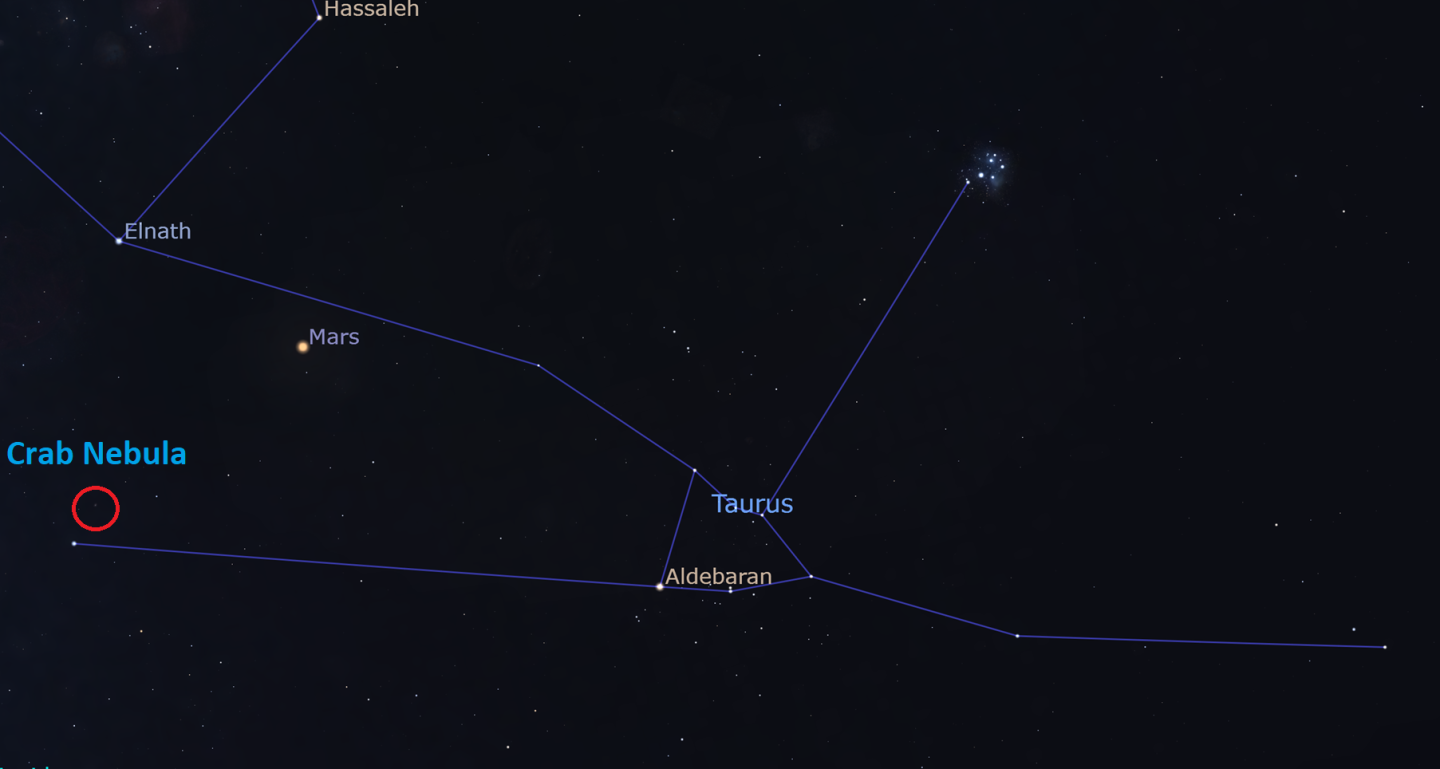
Within the constellation of Taurus the bull, look at the tip of one of the horns and you’ll find the Crab Nebula, the result of a star exploding at the end of its life. The supernova was observed by astronomers in 1054 and was bright enough to be seen in the daytime for three weeks.
Pick up a pair of binoculars or a small telescope and you’ll be able to see the oblong shape of this huge cloud of gas and dust located 6500 light years away from us from moderately light-polluted areas, such as the suburbs. What’s invisible to our eyes however, is the radio, infrared, ultraviolet and X-ray light that the Crab Nebula emits.
Southern Hemisphere – throughout the month: The Tarantula Nebula

If you are in the Southern Hemisphere then look out for another nebula named after an animal – the Tarantula Nebula. This nebula is found in the Large Magellanic Cloud, a relatively small satellite galaxy of the Milky Way, located around 160,000 light years away from us. It is an easy object to find with binoculars but a larger telescope will show off just how spectacular it is.
The Tarantula Nebula is the birthplace of hundreds of thousands of stars, similar to the Great Nebula in Orion. However, the Tarantula Nebula is about 40 times as wide and if it was the same distance to us as the Great Orion Nebula, then it would cover about half of the sky and the light it would emit would be bright enough for us to read a book under!
The Moon’s phases this month
- 8 December: full Moon (04:08 am)
- 16 December: third quarter Moon (08:56 am)
- 23 December: new Moon (10:16 am)
- 30 December: first quarter Moon (01:20 am)
If you're a fan of the Moon, then see the winners and shortlisted images in the 'Our Moon' category of the 2022 Astronomy Photographer of the Year competition.
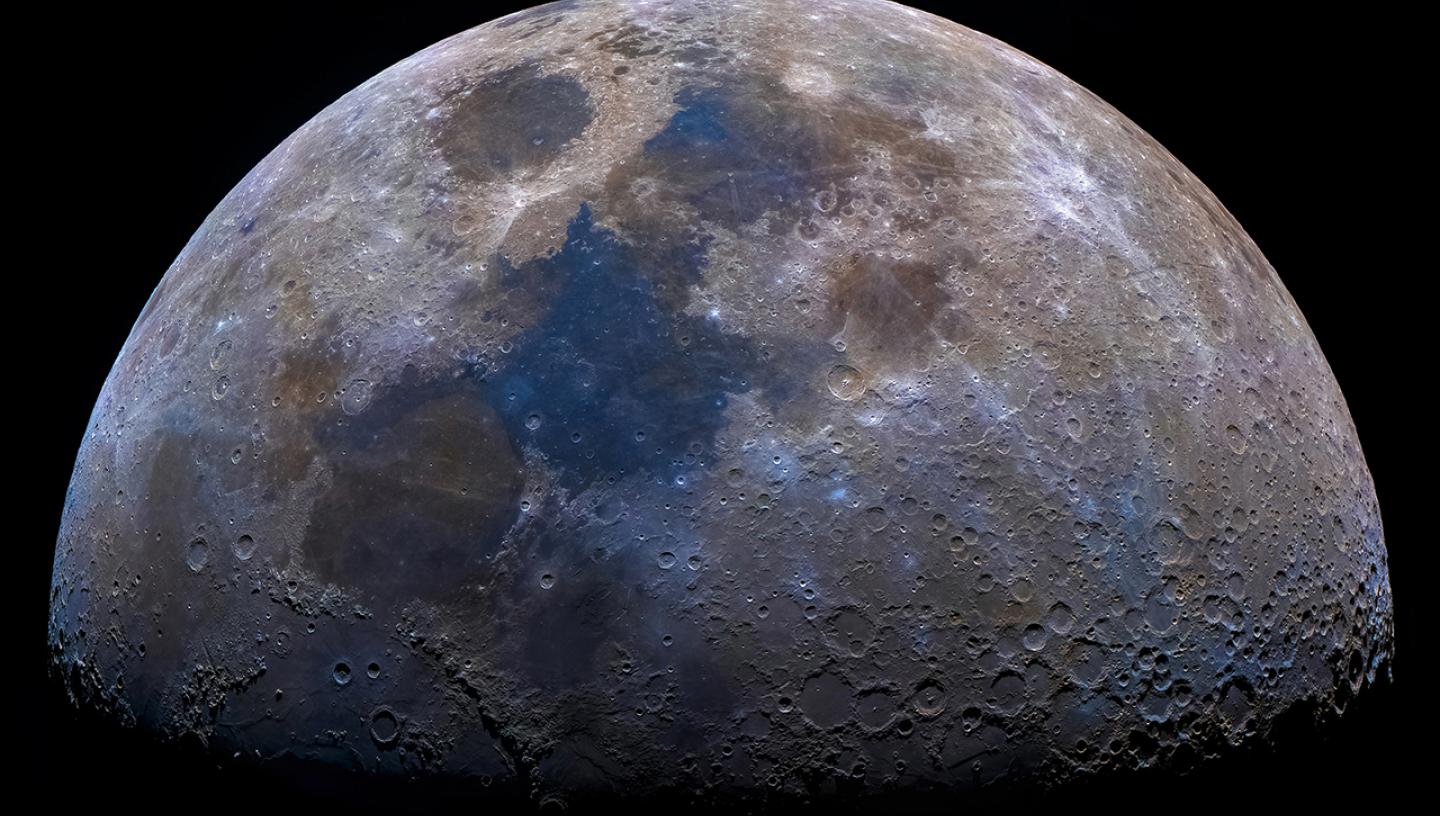
Watch back our live Moon viewing
Stargazing Tips
- When looking at faint objects such as stars, nebulae, the Milky Way and other galaxies it is important to allow your eyes to adapt to the dark so that you can achieve better night vision.
- Allow 15 minutes for your eyes to become sensitive in the dark and remember not to look at your mobile phone or any other bright device when stargazing.
- If you're using a star app on your phone, switch on the red night vision mode.
See our range of observing equipment
Share your pictures
This month's banner image is 'The Crab Nebula in Hydrogen and Oxygen' by Julian Shapiro. It was Highly Commended in the 2022 Astronomy Photographer of the Year Young competition.
Do you have any images of the night sky? If so, why not share your photos via our Royal Observatory Astrophotography Facebook group.
You can also connect with us via Twitter: @ROGAstronomers
Never miss a shooting star!
Sign up to our space newsletter for exclusive astronomy highlights, night sky guides and out-of-this-world events.
Planetarium Shows
Join us for live planetarium shows
Royal Observatory Greenwich YouTube Channel
Subscribe to our YouTube channel and join us on a journey through time and space as we explore our Universe. You'll find a selection of videos on our channel, including our Observatory Online video series in which our astronomers explore different topics in astronomy and space exploration.
Resources for teachers and students
The Royal Observatory Greenwich's learning team has also created:
- Free animated videos that answer the biggest questions in astronomy and free resources to go alongside them.
- A whole host of podcasts featuring interviews with real space scientists, astronauts and active researchers working in UK universities.
- A 'learning at home' hub which contains a suite of resources for you to use at home.


